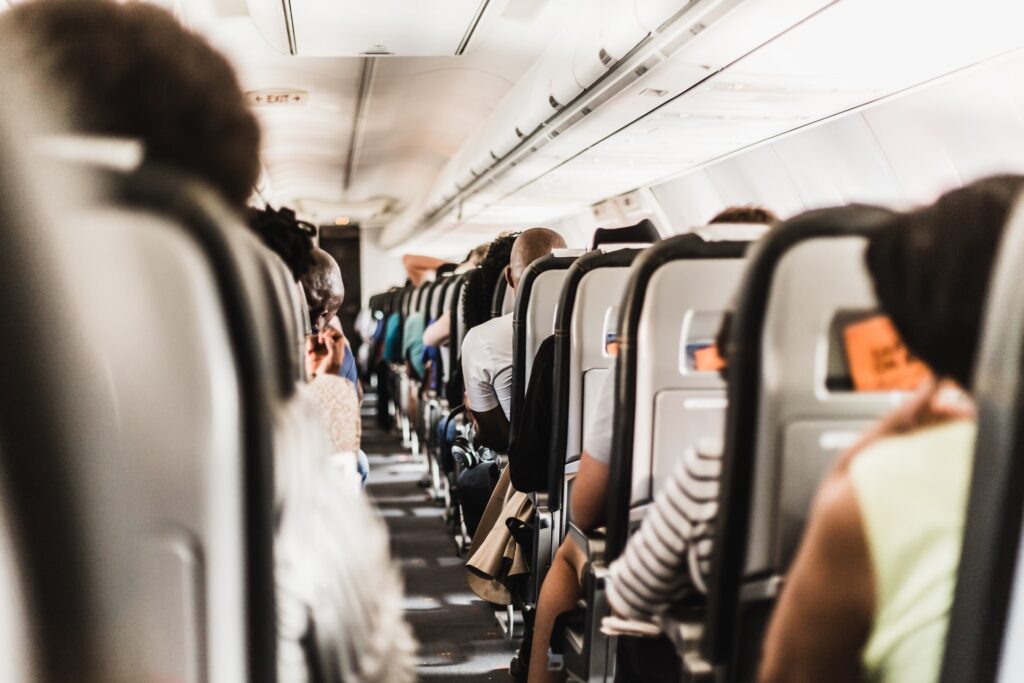So you’ve decided to take a long haul trip, maybe for a holiday, to meet someone or even for work. Maybe this is your first time or you’re an experienced traveller? Either way, long haul flights and travel are a nightmare for most. As experienced travellers, we’ve done the research on how to survive long haul flights and travel, to make it as smooth as possible. We’ve thought about how to ease the process from the start, when booking your flight, to your arrival at the hotel and getting over jetlag, as this is all part of the long haul journey. After all, it’s rare for your final destination to be 20 minutes from the airport, usually, we will travel an additional 1-2 hours just to get where we need to go, further complicating what is already an exhausting process! So, here are our top tips for long haul flights including how to survive long haul flights and long haul travel.
TIP 1: PICK YOUR ARRIVAL TIMES TO REDUCE THE IMPACT OF JETLAG
This first step isn’t always possible, and sometimes there is only one flight time available for the day you want to go, but when there are multiple, try opting for a better flight arrival time if you can. Even if it’s slightly more expensive, you will be less jetlagged on the other side and will have more time to enjoy your time away, which is usually worth a little extra money. It might seem like arriving early to get a full day of activities in is always the best choice, but getting to your destination tired and grumpy means that your first day is always a struggle, and you will barely remember what you’re doing or experiencing.
Generally, we have found that arriving at a destination later in the day, anytime after 15:00/16:00 is incredibly beneficial. Arriving late afternoon means that you have time to get to your destination, have a shower, get your head together, and get out to enjoy a proper evening. If you’re tired (which, let’s face it, most of us are, as sleeping on long haul flights can be difficult!) then you can usually survive the 6-8 hours to see you through going to sleep at a relatively normal time in your new destination. This then allows you to wake up feeling refreshed and ready to start exploring the next day. This is one of our top tips for how to survive long haul flights and can be done before you even get on the plane!

TIP 2: CHOOSE YOUR AIRLINE WISELY
Not every route has a selection of airlines that serve it but, in most cases, there will at least be one or two, and some with many. Picking a better airline will make your journey more enjoyable, including better food, better service and possibly even better legroom, or more comfortable seats. It is also worth signing up for an airline miles programme. If you choose an airline that you fly with often, or you grow to like, then you can earn miles and use these in the future to get money off a flight or maybe even earn a free flight.
We often use Skyscanner to check which airlines and flights are available on certain routes, as this gives you a great overview of what is available. However, we would recommend clicking through to that airline’s website to book the flights, rather than using a third-party site, as this gives you more protection, better customer service directly with the airline, and less risk of hidden fees. Skyscanner also has a great feature which allows you to track the price of a flight or route so that you can ensure you book when it’s at the best price.
TIP 3: AIRPORT CONNECTIONS
Again, this is not always a choice but when it is, we advise connecting in larger airports like Singapore, Hong Kong, Doha, Istanbul, Heathrow, JFK New York and Amsterdam, to name a few. These airports all have great facilities such as on-site hotels, a range of lounges, a large choice of restaurants, bars and shops, and usually amenities such as showers. All this means that your layover will be more comfortable, will give you a better break from flying, and will also be more fun and interesting!
If your layover is more than 3-4 hours then we thoroughly recommend booking lounge access. This may sound expensive but, it usually saves money, as you can often get drinks (sometimes alcoholic), food and even showers included. The seats are more comfortable, the area is quieter, and it’s a great place to relax and recharge. You can use LoungePass to book lounge access in most airports across the world.
Also remember to book your flights with a connection with one carrier where possible, in one booking. This is to ensure you are covered by the airline if your first flight is delayed and you miss your connection. If this isn’t possible then make sure you leave yourself plenty of time between flights, as you may have to pass immigration, collect luggage and re-check in for your next flight at the connecting airport.

TIP 4: PREPARE FOR THE OTHER END
Ok, so now we’re thinking ahead, but to survive long flights, it’s necessary. Check what transport is available from the airport to your final destination in advance, and book in advance if necessary. If you’re flying into a major developed city then this may not be an issue, as you can usually grab a taxi or grab an airport train fairly easily. However, you may still want to check which method of transport is best, as in most cities there are options of buses, trains, coaches, and even varying levels of trains! So doing a small bit of research before you arrive goes a long way to ensure you know what transport you need to be getting when you arrive, what time it departs, and where you need to get off.
If you are arriving at an airport that is a reasonable distance from your final destination, then it might be worth considering booking a transfer in advance, especially in countries where taxi scams are common. The last thing you want to deal with when you’re tired and jetlagged is getting ripped off and haggling the price. We use WelcomePickups which provides airport transfers across much of the globe at reasonable prices.
TIP 5: PACK LIGHT
If you’re bringing a carry on as well as a personal bag then this is something you want to be mindful of. If you have both you’re likely to put your carry on above your seat, in the locker, and your personal bag under the seat in front of you, taking up valuable space for you to stretch out, especially if your personal bag is quite big. We would recommend bringing a smaller personal bag that you can fit under the seat, with everything you need. This will give you greater room to stretch out. Some of our top picks of smaller backpacks and bags for your personal travel bag are:
TIP 6: BRING THE ESSENTIALS To Survive Long Flights
Our essentials to bring with us on any long haul flight are a toothbrush, toothpaste, face wash, flannel, handy wipes and moisturiser. These are must-have long flight essentials. By bringing these on board with you, you can ensure that you will feel clean and refreshed before or during the flight. We usually clean our teeth, wash our face and moisturise a few hours before trying to sleep. This helps us to trick our minds into thinking it is in the bedtime routine and helps our body know that we’re preparing to sleep!
TIP 7: BRING SLEEPING GEAR & TRY TO SLEEP
Another list of things to bring, to help you get the best possible sleep onboard. These are an eye mask, pillow and noise-cancelling headphones. Not everyone finds all of these gadgets work or that any of them do, but it’s a matter of personal preference. Doing whatever you can to help you get that all-important shut-eye is worth it, as it will most definitely improve your experience once you arrive. Remember, if you’re not particularly fussy with some of these items, then many airlines provide free eye masks, pillows and blankets to help you sleep. If you are flying in premium economy or above, then some airlines even provide noise-cancelling headphones for free.
Once you have everything you need to sleep, the most important thing is to try to sleep! We know it can be difficult to try when you don’t feel at all tired, but it’s a must to try. Even if you only get an hour or two of sleep, it will help you feel less tired once you land. This is one of the most important tips for how to survive long haul flights. Try to stretch out as much as you can, do a little bedtime routine and cosy up. Many airlines provide soothing music as part of the entertainment system options, which can help to relax you and drown out some of the surrounding noise. Some of our top picks for flight sleeping gear are:
TIP 8: WEAR COMFORTABLE CLOTHING
With a long day ahead, possibly even more than a day in some cases, one of the most important things is being comfortable. When travelling through airports and seeing lots of other people, it can be quite easy to be worried about our appearance. However, ensuring that we are comfortable should be a top priority. We always wear something comfortable, but smart for the first part of our journey, and then take a change of clothes with us that is super comfy for the plane. This way, we have the best of both worlds.
A couple of hours into the flight, or just before boarding the plane, depending on flight times, we usually change into our comfy clothes. For us, this feels like part of a routine to tell our body and mind to relax and get ready to sleep on the flight, so we find it helps in more ways than one. As a bonus, it is always good to have a spare set of clothes with you as well, just in case you lose your luggage!
TIP 9: STAND UP AND MOVE AROUND
Many of us have heard of DVT (deep vein thrombosis), which is often connected with flying, particularly long haul. The condition can be caused by the lack of movement that many of us endure when sitting for a long time. To avoid this and for our sanity, we find that getting up and moving is vital to survive long haul flights, and also makes the flight feel quicker. Try to get up and move around at least once every couple of hours, even if it’s just to use the WC. You could even take a walk up and down the isles. On some carriers, such as British Airways, you are allowed to stand up by the food trolley area in economy class and have a drink there or a chat. We found that even just 30 minutes standing in this area helped break up the flight time for us, and gave us a break from sitting!

TIP 10: TRY TO BE PRODUCTIVE
Take this point as you want. If this is your holiday and you want to relax, then relaxing could be what is productive for you. Likewise, if you travel a lot and want to make the most of having a few hours uninterrupted, then do some work, work on learning a language, read a book or make a to-do list. Either way, you will probably feel better if you did something productive on the flight, rather than if you didn’t.
TIP 11: DRINK LOTS OF WATER
This sounds obvious and should be something that we are always doing, but, one of our most important long haul travel tips is to make sure you drink lots of water. The constant air conditioning in airports, and especially on planes, is incredibly drying for our skin, so keeping ourselves hydrated is important. Travelling is also somewhat stressful, so it’s good to keep yourself hydrated to avoid pesky headaches. Not all, but many airports now have free refilling stations for water bottles so we recommend making the most of these, to keep your water topped up and to avoid the astronomical costs of bottled water in most airports. On flights, you can usually ask for water at any time, even if it means flagging down a host or going up to ask them. If you want to invest in a reusable water bottle then these are some of our top choices:
TIP 12: AVOID THE TEMPTATION TO SLEEP ON ARRIVAL!
This is very important and will help you so much for the rest of your journey. On arrival at your accommodation, depending on your arrival time, have a shower and a maximum 2-hour nap, particularly if it’s an odd time, to make sure you don’t let the jetlag kick in even worse. For example, we will give three different scenarios:
- You arrive at your accommodation anytime from 09:00 to 14:00, allow yourself to have a maximum of 2 hours sleep when you arrive if you really need it, and then try to continue with the day, but take it easy. Go to bed a little earlier than usual that night
- You arrive at your accommodation anytime from 15:00 to 19:00, allow yourself to have a 1-hour nap if you need it when you arrive. After this, chill out and try to enjoy your evening like a normal night. Maybe go to bed a little earlier if you need it
- If you arrive between 19:00 and 22:00 then do try to get ready and at least head out for some food or just a drink to try and acclimatise yourself to the local time
- If you arrive in the middle of the night then feel free to try and get a normal night’s sleep but wake up at a normal time!
If you allow yourself to sleep for a long period, at a time of day that you wouldn’t usually, then you will confuse your body, and likely make getting to sleep much harder later that day or the following day. This is key a point to surviving long flights to ensure that they don’t ruin the first few days of your trip.
If you’re looking for travel inspiration, information or advice, check out our selection of travel articles and travel guides which cover a range of destinations. Have you followed any of our tips to help you survive long haul flights or travel, or do you have any long haul travel tips of your own? Let us know in the comments below!
There are Amazon links on this page and, as an Amazon Associate I earn from qualifying purchases, but this is at no extra cost to you.

